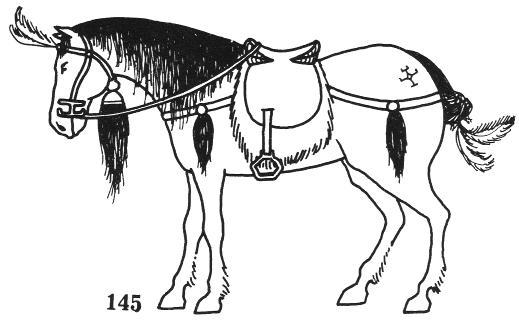
Try Amazon Audible Plus
ASIATIC HORSE
An extract from Armies of the Dark Ages 600-1066by Ian Heath



145. ASIATIC HORSE
Asiatic horses were of many types, ranging from Mongol ponies, through others not dissimilar from the modern Przewalsky horses, to those of the Khazars, described as bigger than Arab steeds. However, contemporaries usually describe them as small, shaggy, generally lean, with large heads and strong necks. Tails were normally knotted.
Vegetius’ description of Hun ponies as hardy, accustomed to frost and cold, and bearing wounds well, is equally applicable to these later horses, which were scrupulously trained and had a tremendous staying power. In addition to suffering climatic hardships the horses were often bled and the mares milked when no other food was available.
Each warrior was usually accompanied by a number of spare mounts, on campaign riding them in rotation so that a fresh mount was always to hand, changing from one to another without dismounting The later Cumans are recorded as accompanied by 10-12 horses, the Mongols variously by 2-7. The norm was probably 3-5, and the majority were geldings.
Saddles were of wood, often decorated, and stirrups were also of wood or less commonly iron. Spurs were not worn, the horse instead being controlled by a whip.
The mark shown on the rump is a tamga, an identification brandmark. These were used even by the Russians, who bought all their horses from their Asiatic neighbours, particularly the Pechenegs.
It is possible that within a horde there may have been a degree of uniformity in horse-colour from tribe to tribe.